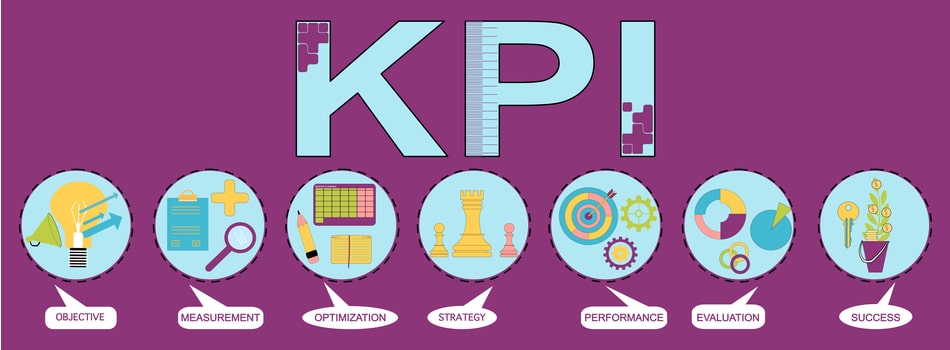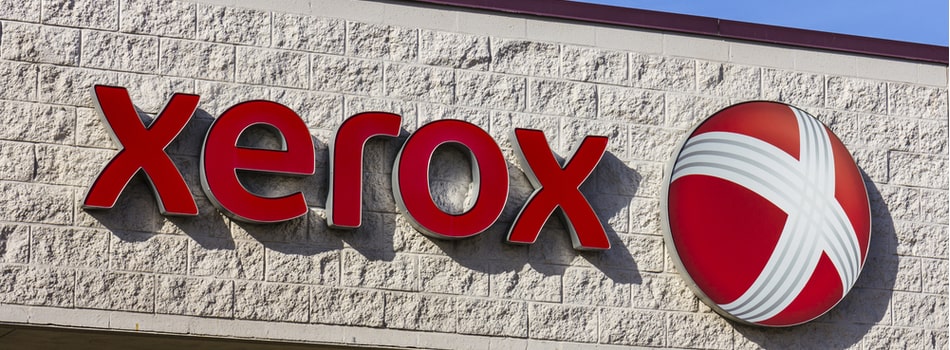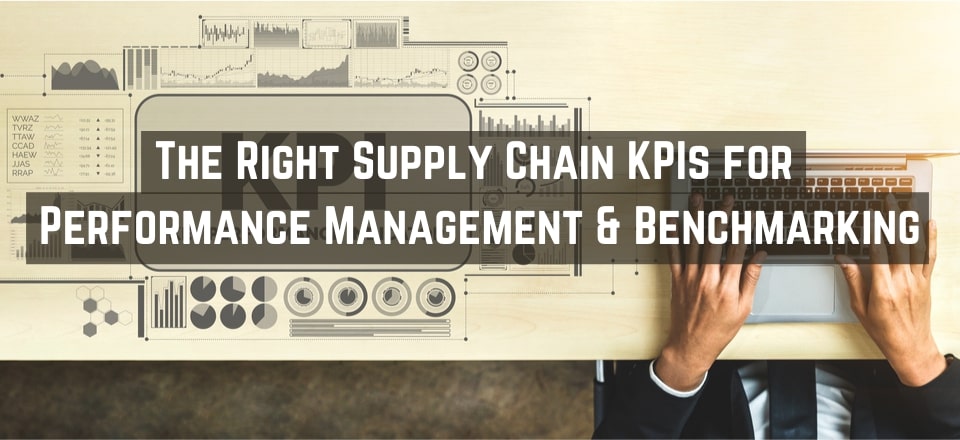Well, not just for benchmarking, but also for maximum visibility of your supply chain and logistics performance. That’s what key performance indicators offer, but only if you select and use the right ones for your business.
“How hard can that be?” I hear you ask. But perhaps surprisingly, in our work, we come across a substantial number of businesses that struggle with KPI selection and use.

If yours is not one of those businesses, and you’re confident in your KPI suite and the relevance of the data it provides, congratulations! You’re in a good place.
But if you and your team are perplexed over performance measurement and management, the following tips might help you get KPI selection right. They will also provide valuable guidance in the use of key performance indicators for performance benchmarking.
What Makes a “Right” KPI?
In answering that question, we’re not going to provide you with a list of possible supply chain KPIs to use in your business—at least, not in this article.
Why? Because you can find plenty of other articles on this blog and the Logistics Bureau blog if you’d like to peruse such lists.
Instead, we’re going to look at KPI characteristics and the relationship between different metrics to help you identify KPIs that are “right” for your company’s situation and circumstances.

We’ll also share some guidance for the KPI selection process, which will help you develop a suite of key performance indicators that combine to highlight the performance elements that matter most and steer you towards the goals you have set.
See the End to Make a Beginning
While we’re on the topic of goals, you have set objectives for your supply chain operations, haven’t you?
No?
Then that has to be the first step you take before you even think about identifying and selecting KPIs, because:
- Objectives give you the reference point for which you need to aim
- They are the destinations for your journey
- They provide the information that shows you what satisfactory performance should look like
- Without objectives (goals), there can be no KPIs

Supply chain management objectives can encompass several success factors, including cost reduction, supply chain speed, efficiency, and service improvement. Whichever elements they cover, though, the most critical requirement is for those objectives to align with your broader business goals.
The Importance of Aligned Objectives
So, for example, if your business competes strongly on price, you might go heavy on the cost-reduction side of supply chain management, setting objectives centered on savings. However, you might be interested to know that if service, rather than low pricing, is a critical value proposition for your company, there is still a strong case for applying cost-saving objectives to your supply chain operations.
That’s because, as counterintuitive as it may seem, companies that deliver excellent service through the supply chain operate at up to 50% less cost than their peers and competitors.
We’ve expanded on this elsewhere on this site, so here we will merely reiterate that superior service equals well-controlled costs. That makes cost-reduction goals and KPIs well worth considering, even if your business is not competing in the low-cost segment of your commercial sector.
Whatever your competitive strategy, though, your supply chain goals should support it. Only once you have set those goals and applied a quantitative value to aim for can you begin to think about what the most suitable KPIs might be to guide you towards their attainment.
The Right KPI Mix: Cost and Service-Centric Metrics
We talk about cost and service a lot here at Benchmarking Success, and with good reason. The two are inextricably linked and, when it comes to measuring performance, are the pillars that support a comprehensive and informative suite of key performance indicators.
At this point, we could provide you with a list of suggested cost and service-focused KPIs to consider, but as mentioned, plenty of our other articles and web pages include such lists. So, instead, we’ll keep the advice simple.
Once you have your supply chain objectives in place, you should aim to develop a suite of KPIs that will track performance towards those goals.
The most appropriate portfolio will contain a mix of service-oriented KPIs, such as delivered on-time and in-full (DIFOT) or perfect order, and some focused on cost, like supply chain costs as a % of sales.

You can also select KPIs to monitor performance in other aspects of supply chain activity, such as safety and health, sustainability, and regulatory compliance if that is a critical feature of your industry. Nevertheless, service and cost should be the primary areas of concentration every time.
The Right KPIs Don’t Counter One Another
That cost and service relationship that we’ve been talking about can throw up some perplexing conundrums in KPI selection. If you don’t get it right, it can even have a counterproductive effect on performance.
For example, your company can indeed reduce costs by raising service levels, typically through error reduction, improved timeliness, and other steps that minimize the need for rework and remedial action. However, some cost-focused KPIs can throw up service risks—and some that are focused on service can drive increases, rather than reductions, in cost.
Therefore, it’s vital to carefully evaluate all potentially useful KPIs before making your selection to ensure that you don’t inadvertently introduce metrics that unbalance the cost and service equation.
Conflicting KPIs: A Brief Example

If you don’t take sufficient care when choosing KPIs, it’s even possible to implement metrics that directly counteract one another.
An example of this might be the implementation of a warehouse productivity KPI that encourages the workforce to pick more orders per hour. Unfortunately, as picking speed increases, so too does the likelihood of picking errors, which would work against any service-oriented KPI such as perfect order, picking accuracy, or delivery in full.
That doesn’t necessarily mean that you can’t have KPIs with the potential to counteract one another, but if you do, it will be critical to implement measures to ensure that they don’t do so.
For instance, to return to the example above, you might need to implement additional checking steps into the picking process to catch picking errors and correct them before orders are loaded onto vehicles for dispatch.
Another alternative might be to introduce a technological solution, such as pick-by voice, to increase productivity while minimizing the risk of errors.
The key is to avoid the risk of taking counterproductive action based on what your KPIs tell you, so either ensure you don’t have any metrics that might conflict with others or take steps to avoid negative actions based on conflicting KPIs.
And, speaking of actions, let’s look now at how the right KPIs guide tangible progress towards your supply chain goals.
The Right KPIs Are Metrics You Can Act Upon
We’ve often said it, but it bears repetition—KPIs alone will do nothing for your supply chain or business performance. They provide you with information, and that’s all. To benefit from KPI monitoring, you must take action based on what the metrics tell you—and that’s why it’s crucial to select the RIGHT KPIs.

The right KPIs will give you information, which, when acted upon, will move your supply chain closer to your performance goals. That’s what makes them KEY performance indicators. Of course, you can have as many other metrics as you like, but the KPIs are the ones that should form a catalyst for action.
The Power of a Performance Dashboard
It’s essential to note that a solitary KPI may not tell you what action you need to take. However, when you combine the right KPIs into a comprehensive performance dashboard, scrutinizing them in concert should give you some valuable pointers toward process or behavioural issues that you can address.
Moreover, once you have taken some action, your KPIs will tell you if your measures are making a positive difference. If not, you can try other solutions until the KPI starts to move in the right direction.
Aside from driving actions to improve costs, service, or other elements of supply chain performance, your KPI selection should consider one more highly beneficial application, which you will not be able to exploit without specific metrics in place.
That application is called supply chain benchmarking. It is a practice that can help you boost performance significantly by showing you how it compares with that of your competitors and peers.
How to Benchmark Your Supply Chain With KPIs
Up to this point, we’ve been discussing KPIs as a way to track progress towards performance goals. Hence, in most cases, it’s logical to have your goals identified before selecting KPIs.
But what about a situation in which you’re not sure what your supply chain goals should be? Your company might be looking for new ways to compete, or perhaps it’s targeting a specific competitor to beat. There may be any number of other scenarios in which you want to see what and how other players in your industry, or enterprises with similar supply chains, are doing.

The most effective way to meet the needs of such scenarios is with a benchmarking project. is simply a fancy way of saying “to compare.” In this context, then, we are talking about comparing the performance of your company’s supply chain with that of its peers or competitors.
The Role of KPIs in Supply Chain Benchmarking
To benchmark successfully, you will need key performance indicators, so you can either select specific KPIs to use for a benchmarking exercise, or you benchmark using the KPIs already selected to align with your supply chain goals.
In the case of the former, you might continue to use the benchmarking KPIs as your operational measurements going forward, or you could decide to use different ones after the project is complete.
The latter option may prove more challenging because you can only compare your performance against other supply chains using the same KPIs you have implemented.
If your KPIs are common ones, it shouldn’t be a problem, of course. But if you use metrics heavily customised to suit your business, there might be no companies with similar measurements against which you can compare. In that case, you will probably need to apply some more commonly used KPIs, if only temporarily, while you conduct the benchmarking.
Finding Companies Against Which to Benchmark
Finding companies to compare against can be one of the most challenging aspects of a benchmarking project. Many organisations are understandably reluctant to share operational performance data, especially with their competitors.
Nevertheless, it’s not an impossible task. It’s just that you need to understand your options, which include:
- Seeking peers with similar supply chains to yours and a reputation for excellence, but which are not competing with you, and asking them to join with you for mutual sharing of performance data and best practices.
- Joining an existing peer group of companies that openly share performance data and best practice information.
- Engaging a consulting company or benchmarking partner (like Benchmarking Success) to help conduct a benchmarking project.
What to Benchmark and Where Will it Get You?
The benchmarking itself is merely a matter of comparing the results of specific KPIs over specific timescales to see how your company’s performance measures up against a best-in-class peer.
Of course, it is possible to benchmark the entire supply chain operation, but it’s more common for a company to focus on one or two specific areas and performance elements.
After desired performance improvements are effected in those areas, a new area of concentration can be chosen for benchmarking, and so on.
By benchmarking in this way, using supply chain KPIs to check how your company’s performance compares with that of best-in-class peers, you can gain a much more insightful view of your supply chain. You will be able to use that intelligence to set realistic objectives and drive performance to competitive levels.
While it’s entirely possible to set objectives without such benchmarks, you won’t know if achieving them will improve your competitive standing significantly or merely inch you forward while your competitors continue to dominate.
How Xerox Helped Make Benchmarking a Thing
A further advantage of benchmarking with supply chain KPIs is the possibility to understand what high-performance supply chain operators do differently, and to adopt their “best practices” to drive improvement within your organisation.
Again, this may not be possible with competitors, but when you benchmark against willing partners in a peer group, the threat of competition is not present, so your peers will typically be happy for you to look and see how they do things.
That was how one of the pioneers of supply chain benchmarking, Xerox, set out to improve its logistics and distribution operations.

By scrutinising industry reports, scouring trade journals, and collaborating with consultants, Xerox’s leaders identified a sporting goods retailer, L.L. Bean, Inc., as the high-performing peer from which it wanted to learn.
Through benchmarking its logistics and distribution processes against those of L.L. Bean, and adopting and adapting some of Bean’s practices to implement within its business, Xerox’s management team was able to achieve considerable productivity gains.
After this initial success, Xerox began incorporating benchmarking as a regular practice. As a result, the company started to achieve annual productivity increases of some 10%—more than double what the company was managing beforehand.
Ready to Get KPIs and Benchmarking Right?
Would you like your company to follow the example of Xerox and improve productivity (or service delivery or cost performance) by benchmarking your company against some best-in-class peers or high performers in other industries? If so, you’ll need to select the right KPIs to help you.
Even if benchmarking is not on your agenda right now, implementing the right KPIs to track progress towards the right objectives should be a primary requisite for your supply chain organisation.
The tips offered in this article should help, and if you need some more practical assistance, our team is ready and waiting to support you.
We offer a range of services specifically to assist companies like yours in identifying and implementing the right KPIs, connecting with peers for best-practice sharing and benchmarking, and ultimately improving cost, service, productivity, and profit.
Better still, we execute most of our services remotely, so you can get to work on KPI development and benchmarking right away, without any concerns about COVID-related rules and restrictions.
To find out more, get in touch, and we’ll connect you with one of our KPI and benchmarking experts for a FREE initial consultation.


